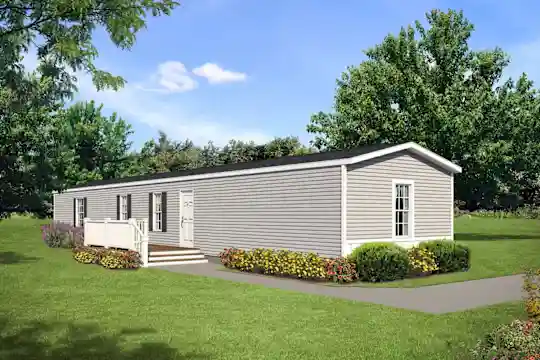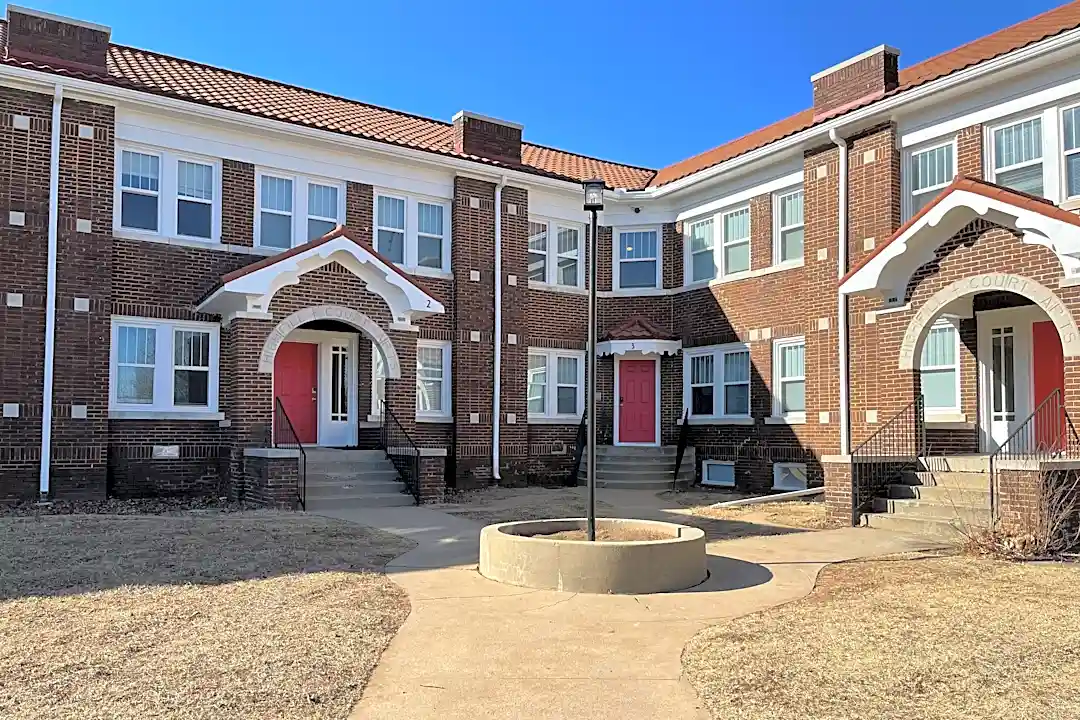rental property
Fostering Community in Rental Properties: A Shared Living Experience
Fostering Community in Rental Properties: A Shared Living Experience
Living in a rental property goes beyond just having a place to reside; it involves being part of a community. This article explores the importance of fostering a sense of community in rental properties and how both landlords and tenants can contribute to creating a positive and vibrant living environment.
Building Connections Through Open Communication
The foundation of a thriving community in a rental property is open communication. Landlords and tenants alike should prioritize clear and transparent communication to foster connections. Establishing channels for dialogue, whether through regular meetings or digital platforms, encourages tenants to engage with one another and with the property management.
1. Community Events and Activities
Organizing community events and activities is an effective way to bring tenants together. Landlords can arrange social gatherings, such as barbecues, game nights, or holiday celebrations, to create opportunities for residents to connect. These events contribute to a sense of belonging and shared experiences within the rental community.
2. Shared Spaces for Interaction
Designating shared spaces within the rental property encourages interaction among tenants. Common areas, such as lounges, communal kitchens, or outdoor spaces, provide places for residents to gather and socialize. The intentional design of these spaces contributes to a sense of community and encourages spontaneous interactions.
3. Supportive Online Communities
In the digital age, online communities can play a crucial role in fostering connections among tenants. Creating a virtual space, such as a dedicated social media group or forum, allows residents to share information, discuss common interests, and organize informal gatherings. This online presence complements face-to-face interactions and enhances the overall sense of community.
4. Collaborative Initiatives for Improvement
Encouraging collaborative initiatives for property improvement fosters a shared sense of responsibility among tenants. Whether it’s a community garden, a recycling program, or beautification projects, involving residents in initiatives to enhance the property creates a collective pride in the living environment.
5. Clear Community Guidelines
Establishing clear community guidelines helps set expectations for behavior and interactions within the rental property. Landlords can outline respectful and inclusive guidelines that promote a harmonious living experience. Transparency about expectations contributes to a positive atmosphere and reduces the likelihood of conflicts.
6. Celebrating Diversity and Inclusivity
Rental communities are often diverse, bringing together individuals from various backgrounds and cultures. Celebrating this diversity fosters inclusivity and strengthens the sense of community. Landlords can organize events or initiatives that recognize and embrace the richness of different cultures and perspectives within the rental property.
7. Providing Resources for Community Engagement
To facilitate community engagement, landlords can provide resources that support residents’ initiatives. This may include access to communal spaces, event planning assistance, or communication tools. Empowering tenants to take an active role in shaping their community contributes to a sense of ownership and belonging.
8. Addressing Concerns and Conflict Resolution
In any community, conflicts may arise. Landlords play a crucial role in addressing concerns promptly and facilitating conflict resolution. Establishing effective channels for reporting issues and implementing fair
Rental Property: Choosing Homes in Top School Districts

Choosing the Right Rental Property in Top School Districts
Investing in a rental property is a significant decision, and for many families, proximity to quality schools is a top priority. Selecting a home in a desirable school district not only provides educational advantages but also contributes to the property’s long-term value. Here’s a guide on how to navigate the process of choosing a rental property in top school districts.
Researching School Districts
Before diving into the rental property market, it’s crucial to conduct thorough research on the school districts in the area. Look beyond overall district ratings and delve into individual school performances. Websites and resources that offer detailed insights into school rankings, teacher-to-student ratios, and extracurricular offerings can be invaluable.
Setting Priorities
When searching for a rental property in proximity to quality schools, it’s essential to set clear priorities. Consider factors such as the academic reputation of the schools, available extracurricular activities, and the overall learning environment. Understanding your family’s educational priorities will help narrow down the options and guide your decision-making process.
Real Estate Budget Considerations
While prioritizing a quality education is important, it’s equally crucial to consider your real estate budget. Rental properties in top school districts may come with a higher price tag. Evaluate your financial capacity and explore the balance between quality education and affordability. In some cases, compromises on property size or amenities may be necessary to stay within budget.
Utilizing Online Real Estate Platforms
Take advantage of online real estate platforms to streamline your search for rental properties in preferred school districts. These platforms often allow users to filter properties based on school district boundaries, making it easier to identify suitable options. Additionally, they provide detailed property listings and virtual tours, enhancing the efficiency of your search.
Engaging with Local Real Estate Agents
Local real estate agents possess in-depth knowledge of the market and can provide valuable insights into specific school districts. They can guide you to neighborhoods that align with your educational preferences and budget. Engage with experienced real estate agents who understand the nuances of the local educational landscape.
Considering Future Resale Value
When choosing a rental property in a top school district, it’s wise to consider the potential resale value of the property. Properties in sought-after school districts tend to appreciate over time, making them a sound investment. Even if you don’t plan on staying in the property long-term, a home in a desirable school district can be an attractive asset for future buyers.
Visiting the Neighborhood
Before finalizing any rental property decision, visit the prospective neighborhoods. Spend time exploring the surroundings, visiting local parks, and observing the community atmosphere. Check out the proximity of the property to schools and other amenities that contribute to a well-rounded living experience.
Community Engagement Opportunities
Living in a neighborhood with quality schools often means more significant community engagement opportunities. Attend local events, join parent-teacher associations, and connect with neighbors to get a sense of the community spirit. A strong community can enhance the
Maximizing Rental Property ROI: Strategies for Success

Maximizing Rental Property ROI: Strategies for Success
Investing in rental properties can be a lucrative venture, but success hinges on maximizing your Return on Investment (ROI). In this article, we’ll explore effective strategies to ensure your rental property delivers the financial returns you desire.
Understanding Rental Property ROI
Before delving into strategies, it’s crucial to grasp the concept of Return on Investment in the context of rental properties. ROI is a financial metric that evaluates the profitability of an investment by comparing the gain or loss from the investment relative to its cost. For rental properties, ROI takes into account rental income, property appreciation, and expenses.
Choosing the Right Location
Location is a paramount factor influencing rental property ROI. A property in a desirable location with proximity to amenities, good schools, and public transportation tends to attract higher rental income. Conduct thorough research on neighborhoods, market trends, and growth potential before making an investment.
Effective Property Management
Proactive property management plays a pivotal role in maximizing ROI. Efficiently addressing tenant concerns, conducting regular maintenance, and ensuring timely rent collection contribute to tenant satisfaction and long-term occupancy. This stability positively impacts your ROI by reducing vacancies and turnover costs.
Smart Renovations and Upgrades
Strategic renovations and upgrades can significantly enhance the value of your rental property. Focus on improvements that provide a good return on investment, such as kitchen and bathroom upgrades or energy-efficient features. These enhancements not only attract quality tenants but also allow you to command higher rental rates.
Keeping Expenses in Check
Controlling expenses is equally vital for optimizing rental property ROI. Regularly review your operational costs, such as property taxes, insurance, and maintenance expenses. Negotiate with service providers, explore cost-effective maintenance solutions, and seek energy-efficient options to reduce long-term operational expenses.
Diversification and Portfolio Management
Consider diversifying your real estate portfolio to spread risk and increase potential returns. Owning properties in different locations or with diverse rental demographics can help safeguard your investment against market fluctuations. However, ensure thorough research and due diligence before expanding your portfolio.
Staying Informed About Market Trends
The real estate market is dynamic and influenced by various economic factors. Stay informed about market trends, interest rates, and economic indicators that may impact property values and rental demand. Being proactive and adaptable allows you to make informed decisions that positively influence your rental property ROI.
Leveraging Technology for Marketing
In today’s digital age, effective marketing is essential for attracting quality tenants. Utilize online platforms, social media, and professional property management software to showcase your rental property. High visibility and a strong online presence can lead to quicker tenant turnovers, minimizing vacancy periods and maximizing rental income.
Investing in Sustainable Practices
Incorporating sustainable practices not only benefits the environment but can also contribute to long-term cost savings and enhanced property value. Consider energy-efficient appliances, eco-friendly landscaping, and other green initiatives that align with modern tenant preferences.
Conclusion: Achieving Long-Term Success
In conclusion, maximizing rental property ROI requires a multifaceted approach. From strategic property management
Ensuring Rental Property Accessibility for All: Key Considerations
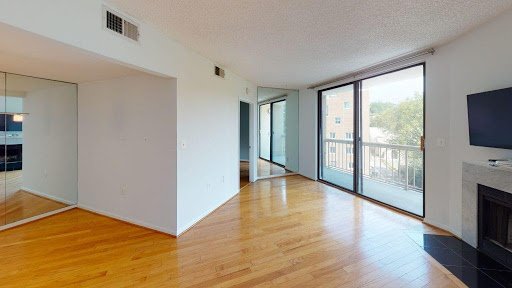
Ensuring Rental Property Accessibility for All: Key Considerations
When managing a rental property, ensuring accessibility is not only a legal requirement but also a moral responsibility. This guide explores essential considerations for landlords to make their properties accessible to all tenants, regardless of their mobility or special needs.
1. Legal Requirements and Compliance
The foundation of rental property accessibility is understanding and adhering to legal requirements. Landlords must familiarize themselves with accessibility laws and regulations that vary by jurisdiction. Compliance with these laws ensures that the property meets the necessary standards for accessibility, protecting landlords from legal complications.
2. Entryways and Exits: A Seamless Experience
The entry and exit points of a rental property should provide a seamless experience for tenants with mobility challenges. Installing ramps or ensuring step-free entryways facilitates easy access. Additionally, well-maintained paths and driveways contribute to a safe and accessible environment for all tenants.
3. Interior Layout and Maneuverability
The interior layout of the rental property plays a crucial role in accessibility. Consider the placement of furniture, the width of doorways, and the overall maneuverability within the living space. A spacious and thoughtfully designed interior allows tenants with mobility aids or wheelchairs to navigate comfortably.
4. Accessible Bathroom and Kitchen Features
Prioritizing accessible features in the bathroom and kitchen is essential. Lever-style door handles, grab bars, and a roll-in shower or accessible bathtub enhance bathroom accessibility. In the kitchen, consider lower countertops and accessible storage to ensure that all tenants can comfortably and safely use these spaces.
5. Lighting and Visibility
Proper lighting is essential for creating an accessible environment. Well-lit pathways, entrances, and common areas reduce the risk of accidents and enhance visibility for tenants with visual impairments. Incorporating adjustable lighting options can accommodate tenants with specific visual needs.
6. Flooring Considerations
The type of flooring in a rental property can impact accessibility. Hard, smooth surfaces facilitate easy movement for individuals using mobility aids. Avoiding high-pile carpets and ensuring that floor transitions are level and secure contribute to a more accessible living space.
7. Communication and Signage
Effective communication is a key component of accessibility. Clear and visible signage with easy-to-read fonts assists tenants in navigating the property. Additionally, providing information in multiple formats, such as written and visual instructions, accommodates tenants with varying communication needs.
8. Outdoor Spaces and Recreational Areas
Accessibility extends beyond the interior of the property to outdoor spaces. Ensuring that outdoor areas are accessible allows all tenants to enjoy recreational spaces. Well-maintained pathways, seating areas, and consideration for landscaping that accommodates diverse mobility needs contribute to a fully accessible property.
9. Flexibility in Accommodations
Landlords should be open to making reasonable accommodations based on individual tenant needs. Whether it’s installing handrails, adjusting counter heights, or allowing modifications to the living space, being flexible and responsive to accommodation requests fosters an inclusive and welcoming rental environment.
10. Regular Accessibility Audits and Updates
Accessibility is an evolving aspect of property management. Conducting regular accessibility audits and implementing updates as needed ensures that
Local Services Near Rental Properties: A Convenience Advantage
Enhancing Rental Living: Access to Local Services
Living in a rental property offers convenience, and one factor that significantly contributes to this is the availability of local services. From grocery stores to healthcare facilities, being close to essential services enhances the overall living experience. In this guide, we’ll delve into the advantages of having local services near rental properties.
Grocery Stores and Convenience Shops
Proximity to grocery stores and convenience shops is a major perk for residents of rental properties. Having these essentials nearby makes daily tasks more manageable, saving time and effort. Whether it’s a quick run for groceries or picking up last-minute necessities, the convenience of nearby stores adds practical value to the rental living experience.
Healthcare Facilities within Reach
Access to healthcare facilities is a crucial aspect of comfortable living. Rental properties situated near hospitals, clinics, or pharmacies provide residents with peace of mind. In case of emergencies or routine medical needs, having healthcare services within reach ensures quick and efficient assistance.
Educational Institutions for Families
Families with children often prioritize rental properties in proximity to educational institutions. Being close to schools and daycare centers streamlines daily routines for parents and ensures that children have easy access to quality education. Rental properties located in well-regarded school districts are particularly sought after by families.
Fitness Centers and Recreational Spaces
For those who prioritize an active lifestyle, having fitness centers and recreational spaces nearby is a significant advantage. Rental properties situated in areas with gyms, parks, or sports facilities provide residents with opportunities for exercise and leisure activities. This contributes to a healthy and balanced lifestyle.
Dining and Entertainment Options
Access to dining and entertainment options is another key consideration for residents of rental properties. Being close to restaurants, cafes, and entertainment venues allows for socializing and exploration of the local culture. It adds vibrancy to the community and ensures a variety of choices for dining and leisure activities.
Public Transportation Hubs
Rental properties located near public transportation hubs offer added convenience for residents who rely on buses, trains, or other forms of public transit. Easy access to transportation facilitates commuting to work, school, or other destinations. It can also be an attractive feature for individuals who prefer a car-free lifestyle.
Community Services and Civic Resources
Being close to community services and civic resources enhances the overall quality of life for residents. This includes access to libraries, community centers, and municipal services. Rental properties situated in neighborhoods with well-established community support contribute to a sense of belonging and engagement.
Local Businesses and Small Shops
Supporting local businesses becomes more accessible when rental properties are situated near small shops and local enterprises. Residents can enjoy a diverse shopping experience, discover unique products, and contribute to the economic vitality of the community. This fosters a sense of community pride and connection.
Safety and Emergency Services
Safety is a top priority for renters, and having emergency services nearby provides a sense of security. Rental properties in close proximity to police stations and
Effective Rental Property Maintenance Tips for Landlords
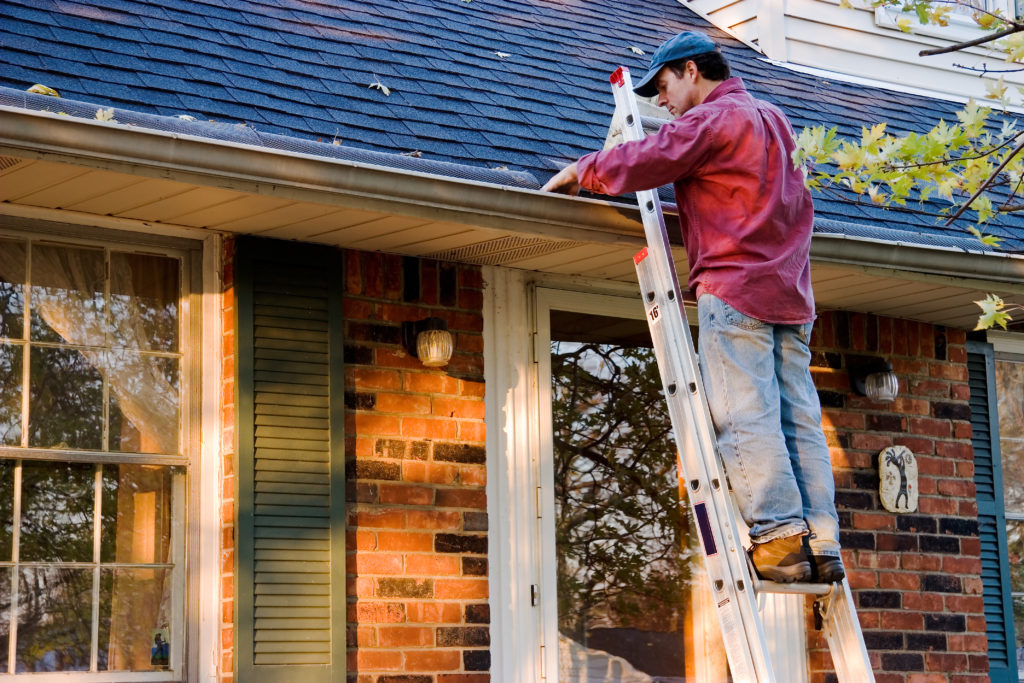
Ensuring Long-Term Success: Rental Property Maintenance Tips for Landlords
Rental property maintenance is a critical aspect of managing a successful rental business. Landlords who prioritize regular upkeep not only enhance the value of their property but also foster positive relationships with tenants. This guide offers valuable tips for effective rental property maintenance.
Regular Inspections: A Preventive Approach
Regular property inspections are the foundation of effective maintenance. Conducting routine checks allows landlords to identify potential issues before they escalate, saving both time and money in the long run. Addressing minor repairs promptly prevents them from turning into major problems.
Create a Comprehensive Maintenance Schedule
Establishing a well-organized maintenance schedule is essential. This includes regular tasks such as HVAC system checks, gutter cleaning, and pest control. By creating a comprehensive plan, landlords can stay on top of essential maintenance activities and ensure that nothing falls through the cracks.
Prioritize Safety Measures
Safety should always be a top priority. Regularly inspect safety features such as smoke detectors, carbon monoxide detectors, and fire extinguishers. Ensure that all safety equipment is in good working condition, providing a secure environment for tenants and complying with legal requirements.
Landscaping Matters: Curb Appeal and Property Value
The exterior of a rental property is the first impression for potential tenants. Investing in landscaping not only enhances curb appeal but also contributes to the overall value of the property. Regular lawn maintenance, tree trimming, and exterior cleaning are key components of a well-kept property.
Promptly Address Tenant Requests
Responsive communication is crucial when it comes to property maintenance. Landlords should encourage tenants to report any issues promptly, and equally important, address these concerns in a timely manner. This not only maintains tenant satisfaction but also prevents small problems from turning into major headaches.
Budgeting for Maintenance Expenses
Smart financial planning includes budgeting for maintenance expenses. Landlords should set aside a portion of the rental income for ongoing maintenance and unexpected repairs. Having a dedicated budget ensures that the property remains in top condition without causing financial strain.
Energy Efficiency Upgrades
Consider incorporating energy-efficient upgrades into your maintenance plan. Upgrading to energy-efficient appliances, installing programmable thermostats, and improving insulation not only reduce utility costs but also attract environmentally conscious tenants.
Stay Informed About Local Regulations
Understanding and complying with local regulations is crucial for landlords. Some areas may have specific maintenance requirements or guidelines. By staying informed, landlords can avoid legal issues and ensure that their property meets all necessary standards.
Professional Partnerships for Specialized Maintenance
For tasks that require specialized knowledge or skills, forming partnerships with professional service providers is advisable. Whether it’s plumbing, electrical work, or pest control, relying on experts ensures that maintenance tasks are handled efficiently and up to code.
Conclusion: A Proactive Approach to Rental Property Maintenance
In conclusion, adopting a proactive approach to rental property maintenance is a key factor in the long-term success of any landlord. Regular inspections, a comprehensive maintenance schedule, and responsive communication with tenants contribute to a well-maintained property. By following
Luxurious House for Rent with Modern Amenities and Stunning Views
Luxurious House for Rent with Modern Amenities and Stunning Views
In today’s fast-paced world, finding the perfect living space that combines luxury, comfort, and breathtaking views can be a challenging task. However, your search for the ideal rental property ends here. Discover a haven of opulence in our luxurious house for rent, where modern amenities seamlessly blend with awe-inspiring surroundings.
Exceptional Architecture and Design
Step into a world of architectural brilliance as you explore the interiors of our prestigious rental property. Every detail has been meticulously crafted to provide an unparalleled living experience. From the grand entrance to the intricately designed rooms, this house is a testament to exquisite craftsmanship.
Modern Amenities for a Contemporary Lifestyle
Experience the epitome of comfort with state-of-the-art amenities that cater to your every need. Our house for rent is equipped with the latest technology, ensuring a seamless integration of modern conveniences into your daily life. From smart home features to energy-efficient appliances, we prioritize your comfort and convenience.
Spacious Living Areas for Unmatched Comfort
The spacious living areas of our rental house are designed to accommodate your lifestyle effortlessly. Whether you are entertaining guests or enjoying a quiet evening with your family, the ample space ensures everyone can find their own corner of relaxation. The open floor plan promotes a sense of freedom and fluidity, creating a harmonious living environment.
Gourmet Kitchen for Culinary Delights
For those who love to indulge in culinary pursuits, our house for rent boasts a gourmet kitchen that is a chef’s dream come true. High-end appliances, premium countertops, and ample storage space make this kitchen a focal point for creating delicious meals and unforgettable memories.
Private Bedrooms Retreats for Tranquil Nights
Escape to your private sanctuary in the form of elegantly designed bedrooms that offer tranquility and comfort. The careful selection of materials and attention to detail create an atmosphere conducive to restful nights and rejuvenating mornings. Each bedroom is a personal retreat, reflecting a blend of luxury and functionality.
Pristine Bathrooms with Spa-like Ambiance
Indulge in the spa-like ambiance of our pristine bathrooms, where meticulous design meets functionality. Luxurious fixtures, high-end finishes, and spacious layouts transform your daily routine into a pampering experience. Step into a realm of relaxation where every shower feels like a rejuvenating escape.
Breathtaking Views to Enchant Your Senses
One of the highlights of our luxurious house for rent is the panoramic views that surround the property. Whether it’s the city skyline, lush landscapes, or serene water features, every window frames a picturesque scene. Wake up to stunning sunrises and unwind with mesmerizing sunsets – nature’s artwork is always on display.
Seamless Indoor-Outdoor Living Spaces
The integration of seamless indoor-outdoor living spaces allows you to connect with nature without leaving the comfort of your home. Enjoy al fresco dining on the terrace, host gatherings in the expansive garden, or simply bask in the sun on your private balcony. The possibilities for outdoor enjoyment are endless.
As you embark on the journey of finding the
Choosing the Right Neighborhood for Your Rental Property
Exploring the Importance of Rental Property Neighborhoods
Selecting the right neighborhood is a crucial aspect of real estate investment and can significantly impact the success of a rental property. This guide delves into the key considerations and factors when evaluating rental property neighborhoods.
1. Proximity to Essential Amenities
One of the primary factors to consider when assessing a rental property neighborhood is its proximity to essential amenities. Tenants often prioritize easy access to grocery stores, schools, healthcare facilities, and public transportation. A neighborhood with convenient access to these amenities enhances the overall appeal of the rental property.
2. Safety and Security Measures
Safety is a paramount concern for both landlords and tenants. Evaluating the safety and security measures in a neighborhood is crucial. Factors such as low crime rates, well-lit streets, and the presence of community policing contribute to a sense of security and attract tenants seeking a safe living environment.
3. Neighborhood Demographics and Target Audience
Understanding the demographics of a neighborhood is essential for landlords. Different neighborhoods cater to diverse demographics, and identifying the target audience for your rental property is key. Whether it’s a family-friendly area, a bustling urban community, or a peaceful suburban enclave, aligning the property with the neighborhood’s vibe is crucial for tenant satisfaction.
4. School District Quality
For tenants with families, the quality of the school district plays a significant role in their decision-making process. Proximity to well-rated schools and educational institutions can make a neighborhood more appealing. It’s wise for landlords to research and highlight the quality of nearby schools when marketing their rental properties.
5. Local Employment Opportunities
The availability of job opportunities in the vicinity is an important consideration. A neighborhood with a thriving job market and proximity to employment hubs is likely to attract tenants. Highlighting local employment opportunities can make a rental property more appealing to potential tenants looking for convenience in their daily commute.
6. Future Development and Infrastructure Plans
Examining future development plans and infrastructure projects in a neighborhood provides insights into its growth potential. A neighborhood with ongoing or planned improvements in transportation, amenities, or commercial spaces may experience increased property value over time, benefiting both landlords and tenants.
7. Cultural and Recreational Offerings
The cultural and recreational aspects of a neighborhood contribute to its overall charm. Proximity to parks, theaters, restaurants, and cultural venues can make a neighborhood more attractive to tenants seeking a vibrant and fulfilling lifestyle. Highlighting these offerings can set a rental property apart from others.
8. Affordability and Market Trends
Affordability is a crucial factor for both landlords and tenants. Assessing the overall cost of living in a neighborhood and staying informed about market trends ensures that rental properties are competitively priced. Understanding the balance between affordability and neighborhood desirability is key to attracting and retaining tenants.
9. Transportation and Commute Accessibility
Easy access to transportation options and convenient commute routes is another significant consideration. A neighborhood with well-connected public transportation and proximity to major highways or business districts is
Proximity Perks: Rental Property Nearby Amenities
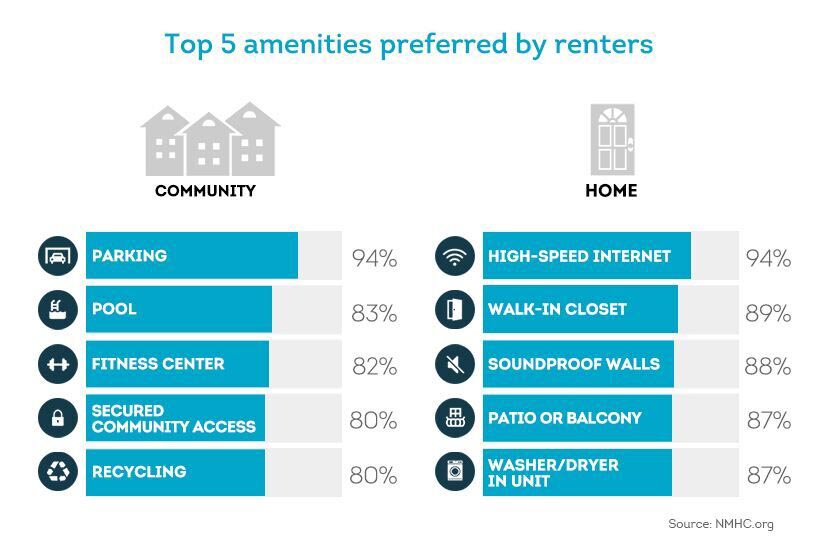
Proximity Perks: Rental Property Nearby Amenities
Living in a rental property is not just about the physical space; it’s also about the surrounding neighborhood and the amenities it offers. This article explores the significance of nearby amenities when choosing a rental property and how they can enhance the overall living experience.
The Impact of Nearby Amenities on Rental Choices
When searching for a rental property, tenants often prioritize proximity to amenities. Access to nearby facilities can significantly impact daily life, providing convenience and enhancing the overall quality of living. Let’s delve into various aspects of how nearby amenities influence rental choices.
1. Convenience of Daily Living
One of the primary advantages of having nearby amenities is the convenience they bring to daily life. Proximity to grocery stores, pharmacies, and other essential services ensures that tenants can easily meet their day-to-day needs without undertaking lengthy journeys. This convenience is especially valued for those with busy schedules.
2. Access to Public Transportation
For tenants who rely on public transportation, the proximity of bus stops, train stations, or other transit options is a key consideration. Easy access to public transportation enhances mobility, making it simpler for tenants to commute to work, school, or other destinations. This is particularly beneficial for those without personal vehicles.
3. Educational Institutions in the Vicinity
Families or individuals with educational needs often seek rental properties near reputable schools and universities. Proximity to educational institutions not only simplifies the daily commute for students but also fosters a sense of community. Rental properties in areas with good schools are often in high demand.
4. Healthcare Facilities for Peace of Mind
The proximity of healthcare facilities is a critical factor for tenants, especially in emergencies or for those with ongoing medical needs. Living near hospitals, clinics, and pharmacies provides peace of mind and quick access to medical assistance when required. This consideration is particularly important for families and individuals prioritizing health.
5. Recreation and Leisure Opportunities
Rental properties with nearby recreational facilities and green spaces contribute to a well-rounded living experience. Parks, sports facilities, and walking trails offer tenants opportunities for leisure and physical activity. Living in an area with such amenities promotes a healthy and active lifestyle.
6. Retail and Shopping Options
The availability of retail outlets and shopping centers nearby is a significant factor for tenants. Whether it’s a mall, local markets, or specialty stores, having shopping options within reach adds convenience and variety to tenants’ lives. Proximity to retail areas enhances the overall attractiveness of a rental property.
7. Cultural and Entertainment Hubs
Living near cultural and entertainment hubs provides tenants with access to theaters, museums, restaurants, and other social venues. Proximity to such cultural amenities enriches the social life of residents, offering opportunities for entertainment and community engagement.
8. Safety and Security Considerations
The safety of the neighborhood is often linked to the availability of nearby amenities. Living in areas with well-lit streets, security patrols, and community services contributes to a sense of safety. Tenants prioritize rental
Optimal Proximity: Enhancing Rental Property Accessibility

Optimal Proximity: Enhancing Rental Property Accessibility
Living in a rental property is not just about the four walls of your home; it’s also about the neighborhood and its proximity to essential services and amenities. This article delves into the significance of rental property proximity and how it can enhance accessibility and overall living satisfaction.
Proximity to Work and Commuting Convenience
One of the key factors in choosing a rental property is its proximity to work. A shorter commute not only saves time but also contributes to a better work-life balance. Being close to employment centers reduces stress, transportation costs, and enhances the overall convenience of daily commuting. It’s a crucial consideration for tenants when selecting their ideal rental property.
1. Access to Educational Institutions
For families or individuals with educational needs, proximity to schools and universities is a paramount consideration. Living close to reputable educational institutions not only ensures easy access for students but also contributes to a sense of community. Families often seek rental properties in neighborhoods with quality schools, making educational proximity a significant factor in the decision-making process.
2. Proximity to Healthcare Facilities
The proximity of a rental property to healthcare facilities is a critical aspect, especially in emergencies or for those with ongoing medical needs. Living near hospitals, clinics, and pharmacies provides a sense of security and quick access to medical assistance when required. Tenants often prioritize such proximity for the well-being and safety of themselves and their families.
3. Convenience of Shopping and Retail
The convenience of shopping and access to retail outlets greatly influences the attractiveness of a rental property. Proximity to supermarkets, malls, and local markets ensures that tenants can easily fulfill their daily needs without undertaking long journeys. Living in an area with a variety of retail options enhances the overall convenience and satisfaction of residents.
4. Recreational Facilities and Green Spaces
Rental property proximity to recreational facilities and green spaces contributes to a higher quality of life. Parks, sports facilities, and natural surroundings provide residents with opportunities for leisure and relaxation. Having these amenities nearby encourages an active lifestyle and fosters a sense of community engagement.
5. Cultural and Entertainment Hubs
Living close to cultural and entertainment hubs enhances the overall experience of residing in a rental property. Proximity to theaters, museums, restaurants, and entertainment venues provides tenants with a vibrant social life. Access to cultural events and entertainment options adds value to the rental property and contributes to the overall satisfaction of residents.
6. Transportation Hubs and Connectivity
The accessibility of transportation hubs is crucial for those who rely on public transit or need easy access to highways and major routes. Proximity to bus stops, train stations, or major roadways ensures seamless connectivity. This is particularly beneficial for tenants who do not own personal vehicles or prioritize public transportation.
7. Safety and Security Considerations
The safety and security of a neighborhood are often linked to its proximity to essential services. Living in close proximity to police stations, fire departments, and
Optimal Rental Property Location: A Key to Successful Investment

The Significance of Rental Property Location in Real Estate Investment
Choosing the right location for your rental property is a critical factor that can significantly impact the success of your real estate investment. From property value appreciation to tenant demand, the location plays a pivotal role in determining the overall profitability of your investment.
Proximity to Amenities and Services
One key aspect to consider when selecting a rental property location is its proximity to amenities and essential services. Properties situated near schools, shopping centers, public transportation, and healthcare facilities tend to attract a larger pool of potential tenants. Convenience is a major selling point for renters, making such locations highly desirable.
Neighborhood Safety and Security
Safety is a top priority for tenants, and the neighborhood’s safety profile directly influences the attractiveness of a rental property. Research crime rates, police presence, and community safety initiatives in the area. A secure neighborhood not only provides peace of mind for tenants but also contributes to the long-term stability of your investment.
Economic Growth and Employment Opportunities
Consider the economic health and growth potential of the location. Areas with strong job markets and diverse employment opportunities are likely to experience sustained demand for rental properties. Economic stability contributes to tenant retention and property value appreciation, making it an essential factor for long-term investment success.
Market Trends and Property Values
Stay informed about current market trends and property values in the chosen location. Analyzing the historical performance and future projections can help you make informed decisions. A location with a track record of property value appreciation suggests a favorable investment climate.
Demographic Considerations
Understanding the demographics of the area is crucial for targeting the right tenant demographic. Different locations attract different types of residents, whether it be families, students, or young professionals. Tailoring your property to the preferences and needs of the local demographic can enhance your property’s appeal.
Local Regulations and Zoning Laws
Be aware of local regulations and zoning laws governing rental properties in the chosen location. Compliance with these regulations is essential to avoid legal issues and potential liabilities. Familiarize yourself with the rental policies, property taxes, and any restrictions that may impact your investment.
Environmental Factors and Sustainability
Increasingly, tenants are becoming conscious of environmental factors and sustainability. Consider the eco-friendliness of the location, such as access to public transportation, green spaces, and energy-efficient infrastructure. Properties in environmentally friendly locations may have a competitive edge in the rental market.
Rental Property Location: A Strategic Investment Decision
Choosing the right rental property location is a strategic decision that requires thorough research and analysis. It’s not just about the physical aspects of the property but also about the surrounding environment and its impact on the property’s performance.
Rental property location is a crucial element in the success of your real estate investment. Walenshipnig Ltd provides valuable insights into prime locations, helping you make informed decisions. With our expertise, you can navigate the real estate market confidently and maximize the returns on your rental
Navigating Rental Property Neighbors: Tips for a Harmonious Environment

The Dynamics of Rental Property Neighbors: Creating Harmony in Your Living Space
Living in a rental property comes with its unique set of dynamics, and the relationship with your neighbors is a significant aspect that can influence your overall experience. Navigating these relationships thoughtfully is essential for fostering a harmonious living environment.
Choosing a Rental Property: Considerate Location Selection
When selecting a rental property, it’s crucial to consider the neighborhood and the nature of the community. Factors such as noise levels, proximity to shared spaces, and the general atmosphere play a role in determining the compatibility with potential neighbors. Choosing a property in a considerate location sets the foundation for positive interactions with neighbors.
Introduce Yourself: Building a Neighborly Connection
Once you’ve settled into your rental property, take the initiative to introduce yourself to your neighbors. A friendly greeting and a brief conversation can go a long way in establishing a positive rapport. Knowing your neighbors creates a sense of community and makes it easier to address any concerns or issues that may arise in the future.
Respecting Shared Spaces: Common Courtesies for a Harmonious Environment
Shared spaces in rental communities, such as parking lots, hallways, and recreational areas, require a level of respect and consideration. Parking etiquette, noise levels, and cleanliness in shared spaces contribute to the overall harmony of the community. Being mindful of these common courtesies fosters a sense of cooperation among neighbors.
Communication is Key: Addressing Concerns Amicably
In any living situation, conflicts or concerns may arise. It’s essential to approach such situations with open communication. If a neighbor’s behavior is causing discomfort, address the issue amicably. Constructive communication helps in finding resolutions and maintaining a positive living environment. Discussing concerns directly with the neighbor or involving property management can often lead to satisfactory outcomes.
Community Events and Initiatives: Building Camaraderie
Participating in community events or initiatives is a great way to build camaraderie with your neighbors. Whether it’s a neighborhood cleanup, a social gathering, or a shared project, these activities provide opportunities to connect with others. Building a sense of community contributes to a more enjoyable living experience for everyone.
Respecting Privacy: Boundaries in Close Quarters
Respecting privacy is paramount in rental communities where living spaces are in close proximity. Be mindful of noise levels, especially during quiet hours, and avoid intruding on your neighbors’ personal spaces. Establishing and respecting boundaries contributes to a more comfortable and respectful living environment.
Emergency Preparedness: Building a Supportive Network
In times of emergency, having a supportive network of neighbors can be invaluable. Exchange contact information with your neighbors and be aware of any emergency protocols in your community. A sense of unity in the face of unforeseen circumstances can strengthen the bonds between neighbors.
Rental Property Neighbors with Walenshipnig Ltd
For those seeking rental properties with a focus on community harmony, Walenshipnig Ltd offers expert guidance in choosing the right living space. Our commitment to creating positive living environments extends to providing valuable resources and insights into fostering
Optimal Rental Property Features: A Tenant’s Guide
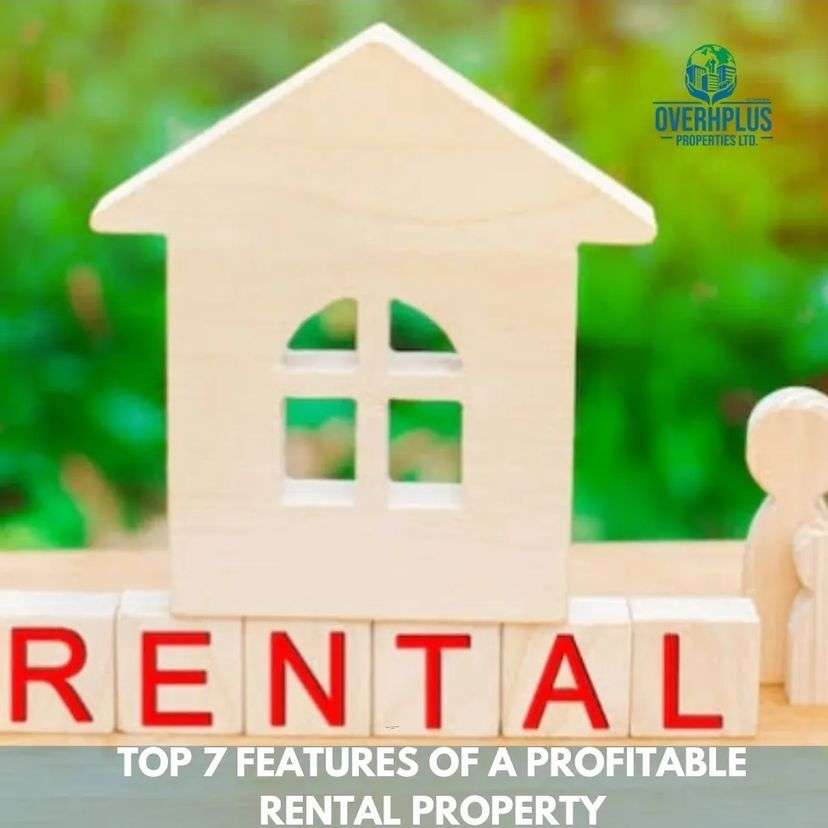
Exploring Optimal Rental Property Features: A Tenant’s Guide
When searching for a rental property, tenants often prioritize specific features that contribute to a comfortable and enjoyable living experience. This guide explores the essential rental property features that tenants seek, offering valuable insights for both landlords and those in search of their ideal rental home.
1. Location, Location, Location
The old adage holds true: location is paramount. Proximity to essential amenities, public transportation, schools, and workplaces significantly influences a tenant’s decision. A property situated in a convenient and safe neighborhood is likely to be more appealing to potential tenants.
2. Safety and Security Measures
Tenant well-being is a top concern, making safety and security features crucial. Properties equipped with reliable locks, well-lit common areas, and possibly security systems offer tenants peace of mind. Highlighting these features can make a property stand out in a competitive rental market.
3. Modern Appliances and Upgraded Fixtures
Tenants often look for modern conveniences that simplify daily life. Up-to-date kitchen appliances, energy-efficient lighting fixtures, and well-maintained plumbing contribute to a positive living experience. Landlords who invest in these upgrades may attract a wider pool of tenants.
4. Ample Storage Space
Storage space is a practical consideration for tenants. Properties with sufficient closets, cabinets, and additional storage areas are particularly appealing. Highlighting the available storage space in a rental property can set it apart from others in the eyes of potential tenants.
5. In-Unit Laundry Facilities
The convenience of in-unit laundry facilities is a significant draw for tenants. Having a washer and dryer within the rental unit eliminates the need for trips to communal laundry rooms or laundromats, enhancing the overall appeal of the property.
6. Pet-Friendly Policies
For tenants with pets, finding a pet-friendly rental is essential. Properties that embrace pet-friendly policies, such as designated pet areas or a welcoming attitude towards pets, are likely to attract a broader tenant demographic.
7. Outdoor Spaces and Recreational Amenities
Access to outdoor spaces and recreational amenities contributes to a higher quality of life for tenants. Whether it’s a balcony, patio, or shared outdoor areas, having spaces for relaxation and recreation enhances the overall appeal of a rental property.
8. Parking Availability
The availability of convenient and secure parking is a significant consideration for many tenants, especially in urban areas. Offering designated parking spaces or providing information about nearby parking options can make a rental property more attractive.
9. Responsive Property Management
Effective and responsive property management adds tremendous value to a tenant’s experience. Landlords who promptly address maintenance requests, provide clear communication, and maintain a well-kept property contribute to a positive living environment.
10. Sustainable and Energy-Efficient Features
Increasingly, tenants seek rental properties with sustainable and energy-efficient features. This may include energy-efficient appliances, smart thermostats, and environmentally conscious building practices. Such features align with the growing demand for eco-friendly living spaces.
Conclusion: Creating an Appealing Rental Experience
In conclusion, understanding and prioritizing these optimal rental property features can help landlords attract and retain desirable tenants. Whether it’s the
Accessible Commutes: Rental Property Transportation Ease
Accessible Commutes: Rental Property Transportation Ease
Living in a rental property is not just about the four walls you call home; it’s also about the convenience of reaching your workplace, schools, or other destinations. This article explores the importance of transportation access when considering rental properties and how it can significantly impact the overall quality of life.
The Significance of Transportation Access
Transportation access is a critical factor that influences the daily lives of renters. Easy access to public transportation, highways, and other commuting options can make a substantial difference in the overall convenience and efficiency of one’s daily routine. Let’s delve into various aspects highlighting the significance of transportation access when choosing a rental property.
1. Proximity to Public Transportation
One of the primary considerations for tenants is the proximity of a rental property to public transportation hubs. Easy access to buses, trains, or subway stations simplifies commuting, especially for those without personal vehicles. Living near public transportation not only saves time but also contributes to a more sustainable and cost-effective lifestyle.
2. Commuting Distance to Work
For many tenants, the distance between their rental property and workplace is a crucial factor. A property located close to work reduces commuting time and stress. Considerations such as the availability of direct routes, traffic conditions, and overall convenience play a role in determining the desirability of a rental property.
3. Accessibility to Major Highways
Access to major highways is essential, especially for tenants who rely on personal vehicles. A rental property with convenient highway access provides flexibility and ease of travel, whether for daily commutes or weekend getaways. Proximity to well-maintained roads contributes to a smoother overall commuting experience.
4. Availability of Parking Spaces
For tenants with personal vehicles, the availability of parking spaces is a critical consideration. Whether it’s on-site parking, designated spaces, or nearby public parking facilities, convenient parking options add to the appeal of a rental property. This is particularly important in areas where street parking may be limited.
5. Walkability and Bike-Friendly Areas
The walkability of the neighborhood and its bike-friendliness are factors gaining prominence in rental property considerations. Living in a walkable neighborhood with access to amenities, parks, and shops on foot enhances the overall quality of life. Bike-friendly areas provide alternative and eco-friendly commuting options.
6. Public Transportation Cost Considerations
Beyond convenience, tenants often consider the cost of public transportation when choosing a rental property. Living in an area with affordable and efficient public transportation can significantly impact a tenant’s budget. This consideration becomes especially relevant for those who rely on public transit for daily commuting.
7. Transportation Infrastructure Development
An awareness of ongoing and planned transportation infrastructure developments in the area adds a forward-thinking perspective. Tenants may choose areas where new transportation projects, such as expanded public transit or improved roadways, are in progress, anticipating enhanced transportation options in the future.
8. Commuting Flexibility for Remote Work
In the evolving landscape of remote work, commuting flexibility is gaining importance. Tenants may prioritize rental properties
Architectural Elegance: Shaping Exceptional Rental Living
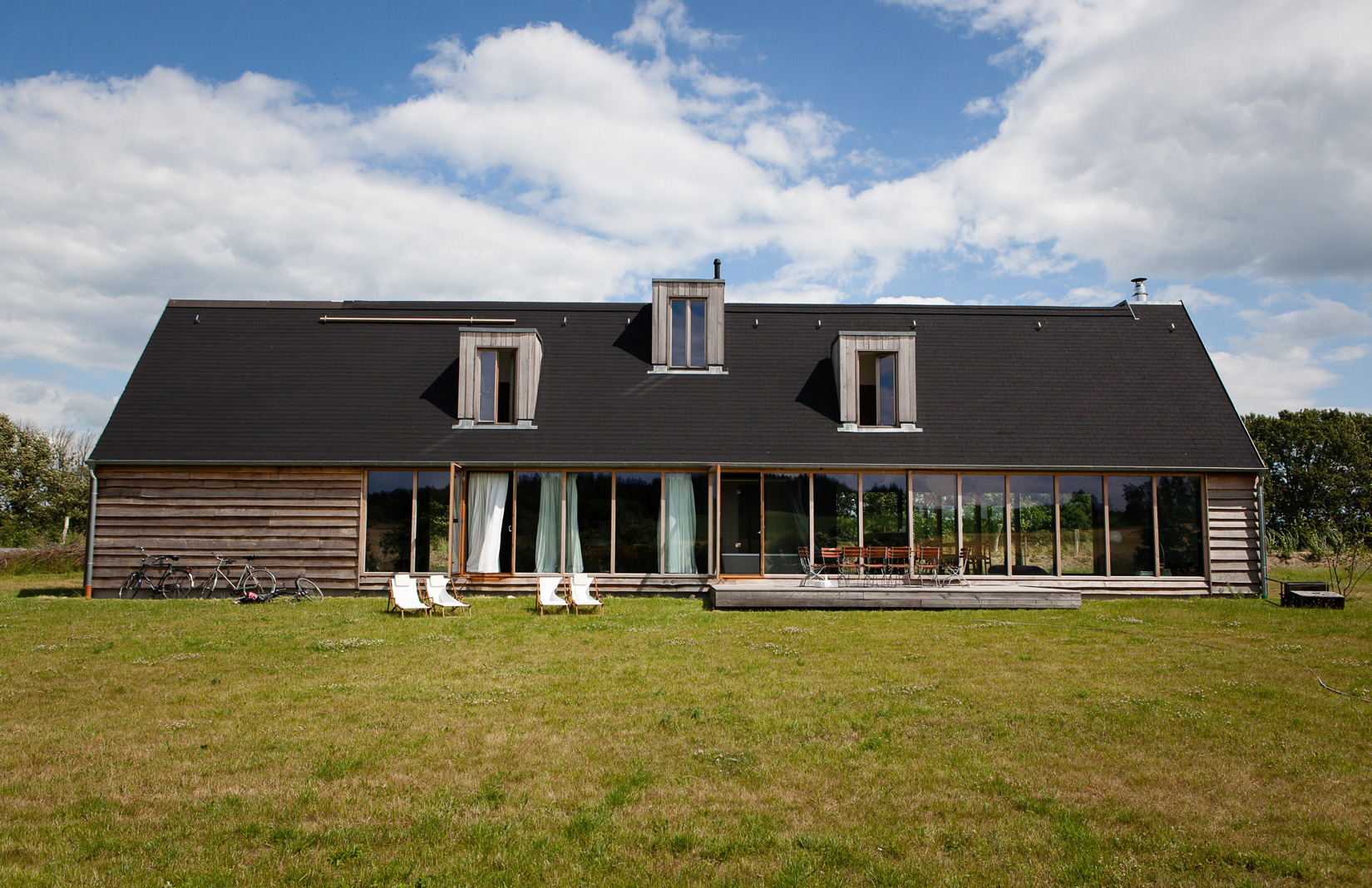
Architectural Elegance: Shaping Exceptional Rental Living
The architectural design of rental properties plays a crucial role in defining the living experience for tenants. This article delves into the significance of rental property architecture and how thoughtful design can elevate the quality of life for those who call these spaces home.
The Impact of Architectural Design on Tenant Experience
Architectural design goes beyond aesthetics; it directly impacts how tenants interact with and experience their living spaces. Thoughtful design can enhance functionality, promote sustainability, and create a harmonious atmosphere that contributes to a positive and enriching living experience.
1. Functionality and Space Optimization
One of the primary considerations in rental property architecture is functionality. Well-designed spaces optimize the use of square footage, ensuring that every area serves a purpose. From open-concept living areas to efficient storage solutions, functionality is key to creating spaces that meet the diverse needs of tenants.
2. Sustainable and Eco-Friendly Features
Modern rental properties often prioritize sustainability in their architectural design. Incorporating eco-friendly features such as energy-efficient appliances, solar panels, and water-saving fixtures not only benefits the environment but also reduces utility costs for tenants. Sustainable architecture aligns with the growing demand for environmentally conscious living.
3. Aesthetic Appeal and Visual Harmony
Aesthetics play a significant role in architectural design, contributing to the overall visual appeal of rental properties. Thoughtful use of colors, materials, and design elements can create a visually harmonious environment that enhances the aesthetic experience for tenants. A well-designed property fosters a sense of pride and comfort.
4. Outdoor Spaces and Connectivity with Nature
The inclusion of outdoor spaces is a hallmark of thoughtful rental property architecture. Whether it’s private balconies, communal gardens, or rooftop terraces, these spaces provide tenants with opportunities to connect with nature and enjoy the outdoors. Incorporating green elements contributes to a healthier and more balanced living environment.
5. Accessibility and Inclusive Design
Architectural design should prioritize accessibility to ensure that rental properties are welcoming and usable for individuals of all abilities. Inclusive design features, such as ramps, wider doorways, and accessible amenities, create spaces that accommodate diverse tenant needs, promoting equality and inclusivity.
6. Flexibility for Evolving Lifestyles
Rental property architecture that allows for flexibility is well-suited to the dynamic nature of tenants’ lifestyles. Spaces that can adapt to changing needs, whether through modular design or multifunctional areas, provide tenants with the versatility to customize their living environments as their lifestyles evolve.
7. Technological Integration
Incorporating technology into architectural design is becoming increasingly important in modern rental properties. From smart home systems to high-speed internet connectivity, technological integration enhances convenience and connectivity for tenants. This forward-thinking approach aligns with the tech-savvy expectations of contemporary renters.
8. Noise Reduction and Privacy Considerations
Thoughtful rental property architecture addresses noise reduction and privacy concerns. Well-designed layouts, soundproofing measures, and strategic placement of living spaces contribute to a peaceful and private living experience. Prioritizing these considerations enhances the overall well-being of tenants.
9. Safety and Security Features
Ensuring the safety and security of tenants
Navigating Rental Property Regulations: A Comprehensive Guide
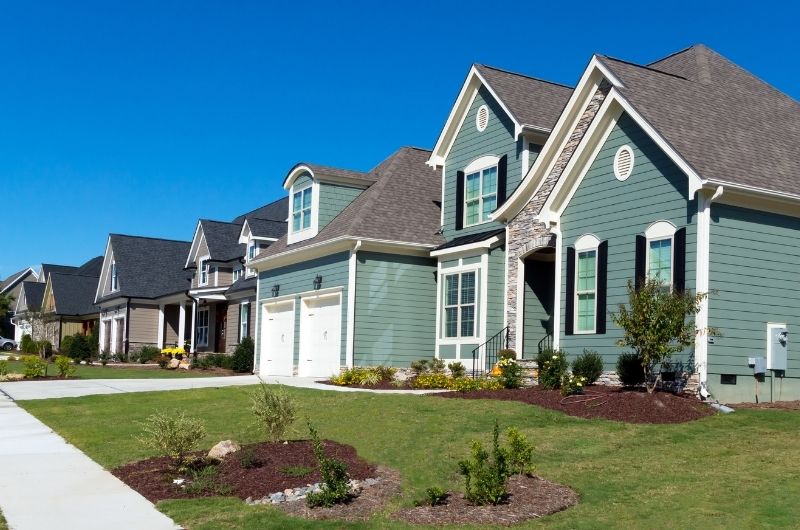
Navigating Rental Property Regulations: A Comprehensive Guide
In the dynamic landscape of real estate, understanding and adhering to rental property regulations is crucial for both landlords and tenants. This comprehensive guide will walk you through the key aspects of these regulations, providing valuable insights to ensure a smooth and legal rental experience.
Understanding Local Laws
Before diving into the world of rental property regulations, it’s essential to recognize that these laws vary from one location to another. Each city, state, or country may have its own set of rules governing landlord-tenant relationships. Therefore, it’s crucial to familiarize yourself with the specific regulations applicable to your area.
Lease Agreements: The Foundation of Legal Protections
A well-drafted lease agreement serves as the foundation for a successful landlord-tenant relationship. This document outlines the terms and conditions of the rental arrangement, including rent amount, payment due dates, maintenance responsibilities, and more. It’s imperative for both parties to thoroughly review and understand the lease agreement before signing.
Tenant Rights and Responsibilities
Tenant rights are an integral aspect of rental property regulations. It’s crucial for landlords to respect these rights, which often include the right to a habitable living space, privacy, and protection against unfair eviction. Likewise, tenants have responsibilities outlined in the lease agreement, such as timely rent payments and proper property maintenance.
Landlord Obligations and Responsibilities
Landlords, too, have specific obligations to fulfill. This may include ensuring the property meets health and safety standards, promptly addressing maintenance issues, and respecting the tenant’s right to quiet enjoyment. Understanding and fulfilling these obligations is essential for a positive landlord-tenant relationship and legal compliance.
Security Deposits: Guidelines and Best Practices
Security deposits are a common source of disputes between landlords and tenants. This section explores the regulations surrounding security deposits, including the maximum allowable amount, the timeline for refunding, and the conditions under which deductions are permissible. Both parties should be well-informed about these regulations to prevent conflicts.
Rent Increases: Legal Constraints and Considerations
Landlords often need to adjust rent prices due to various factors such as property value appreciation or increased maintenance costs. However, rental property regulations impose constraints on the frequency and magnitude of rent increases. This part of the guide delves into the legal considerations surrounding rent adjustments, offering clarity on what’s permissible.
Navigating Evictions: Legal Procedures and Tenant Protections
Evictions are a last resort, but when necessary, landlords must follow legal procedures. This section outlines the steps involved in an eviction, emphasizing the importance of adherence to regulations to protect both parties. Tenant protections during the eviction process are also discussed to ensure fair and lawful proceedings.
Stay Informed and Seek Professional Advice
Rental property regulations are subject to change, so it’s crucial to stay informed about updates in local laws. Additionally, seeking professional advice from legal experts or property management professionals can provide valuable insights and guidance tailored to your specific situation.
In conclusion, navigating rental property regulations is a fundamental aspect of a successful and legally compliant landlord-tenant relationship. By understanding
Stylish Rental Property with Modern Comforts and Prime Location

Discover Your Ideal Home: Stylish Rental Property with Modern Comforts
In the quest for the perfect living space, individuals seek a harmonious blend of style, comfort, and convenience. Our stylish rental property emerges as the epitome of modern living, offering a haven where contemporary comforts meet prime location.
Aesthetic Appeal and Contemporary Design
As you step into our rental property, be prepared to be captivated by its aesthetic allure and contemporary design. The exterior exudes elegance, setting the tone for the stylish interiors that await within. Every element has been carefully curated to create a visual masterpiece that reflects modern sensibilities.
Modern Comforts Redefined
At the heart of our rental property lies a commitment to redefining modern comforts. From smart home features to energy-efficient appliances, we prioritize technology that enhances your lifestyle. The seamless integration of these amenities ensures a living experience that is not only stylish but also effortlessly functional.
Prime Location for Convenience
Location plays a pivotal role in the desirability of any rental property, and ours is strategically situated for utmost convenience. Whether it’s proximity to business districts, educational institutions, or recreational facilities, our rental property places you at the center of it all. Embrace the ease of accessing everything you need just steps away from your doorstep.
Spacious Interiors for Versatile Living
The interiors of our rental property are designed with a focus on spaciousness, providing you with versatile living options. Ample room for customization allows you to transform the space into your personal sanctuary. Whether you’re a minimalist or an avid collector, our property accommodates your unique lifestyle with ease.
A Gourmet Haven in Your Kitchen
For those who cherish culinary pursuits, our rental property boasts a gourmet kitchen that beckons creativity. High-end appliances, stylish countertops, and thoughtful layouts make this kitchen a haven for cooking enthusiasts. Prepare meals with flair and entertain guests with culinary delights in a space that seamlessly blends style and functionality.
Private Retreats in Every Bedroom
Each bedroom in our rental property is a private retreat, carefully designed to offer tranquility and relaxation. The interplay of colors, textures, and ambient lighting creates an atmosphere conducive to restful nights. Unwind in comfort and style as you make each bedroom your personal haven within the larger canvas of the property.
Balancing Tranquility with Vibrancy in Bathrooms
The bathrooms in our rental property strike a perfect balance between tranquility and vibrancy. Luxurious fixtures, contemporary design, and spa-like features transform these spaces into sanctuaries of relaxation. Pamper yourself in style and rejuvenate your senses in an environment that combines aesthetics with functionality.
Seamless Indoor-Outdoor Living Experience
Embrace the beauty of nature without leaving the confines of your home through our seamless indoor-outdoor living spaces. Access private balconies, patios, or terraces that extend your living areas into the open air. Enjoy the serenity of outdoor spaces designed for relaxation, entertaining guests, or simply basking in the sunlight.
Your Journey Starts Here
Embark on a journey to find your ideal home by exploring our stylish rental


